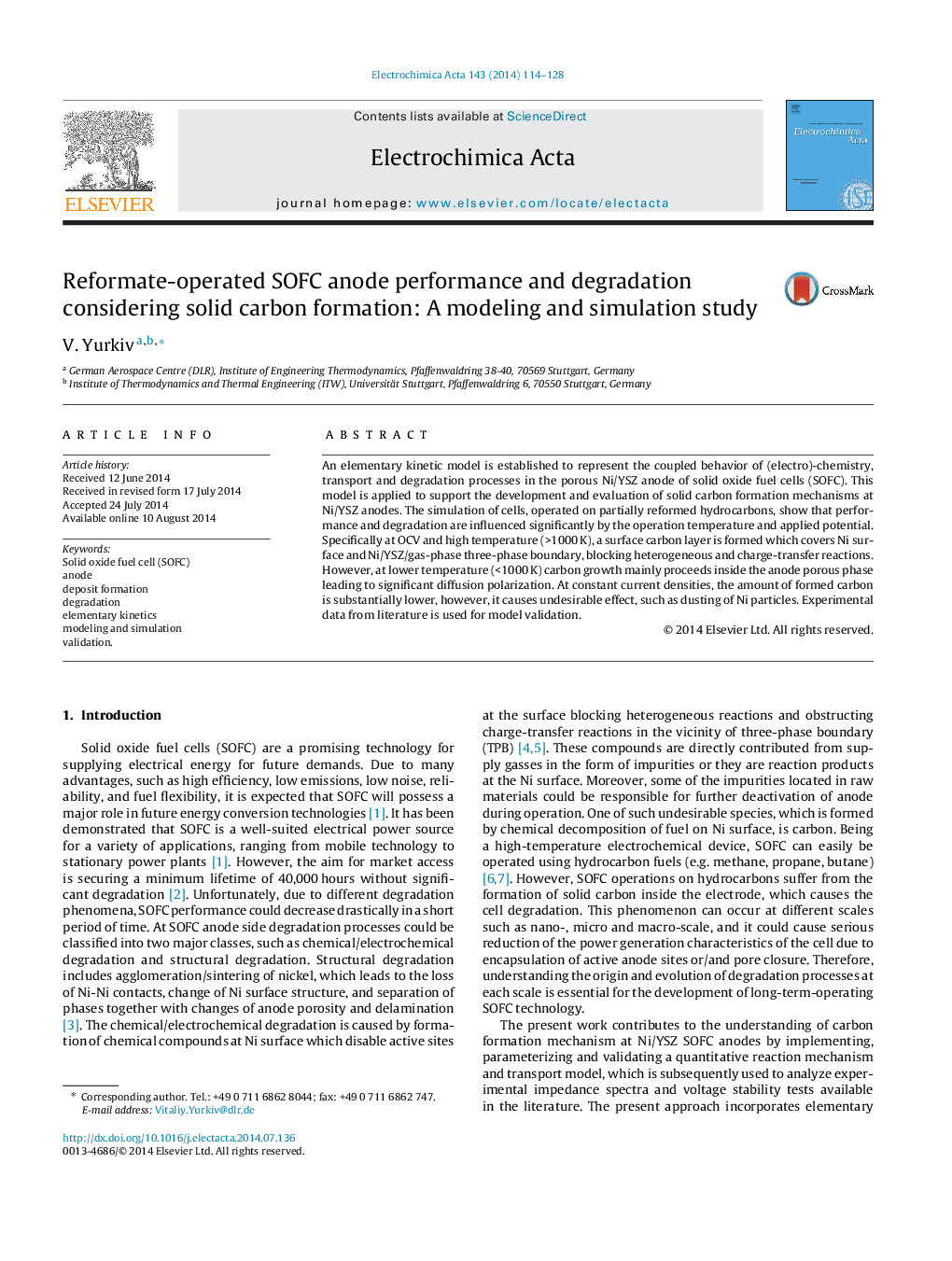| Article ID | Journal | Published Year | Pages | File Type |
|---|---|---|---|---|
| 185144 | Electrochimica Acta | 2014 | 15 Pages |
An elementary kinetic model is established to represent the coupled behavior of (electro)-chemistry, transport and degradation processes in the porous Ni/YSZ anode of solid oxide fuel cells (SOFC). This model is applied to support the development and evaluation of solid carbon formation mechanisms at Ni/YSZ anodes. The simulation of cells, operated on partially reformed hydrocarbons, show that performance and degradation are influenced significantly by the operation temperature and applied potential. Specifically at OCV and high temperature (>1000 K), a surface carbon layer is formed which covers Ni surface and Ni/YSZ/gas-phase three-phase boundary, blocking heterogeneous and charge-transfer reactions. However, at lower temperature (<1000 K) carbon growth mainly proceeds inside the anode porous phase leading to significant diffusion polarization. At constant current densities, the amount of formed carbon is substantially lower, however, it causes undesirable effect, such as dusting of Ni particles. Experimental data from literature is used for model validation.
